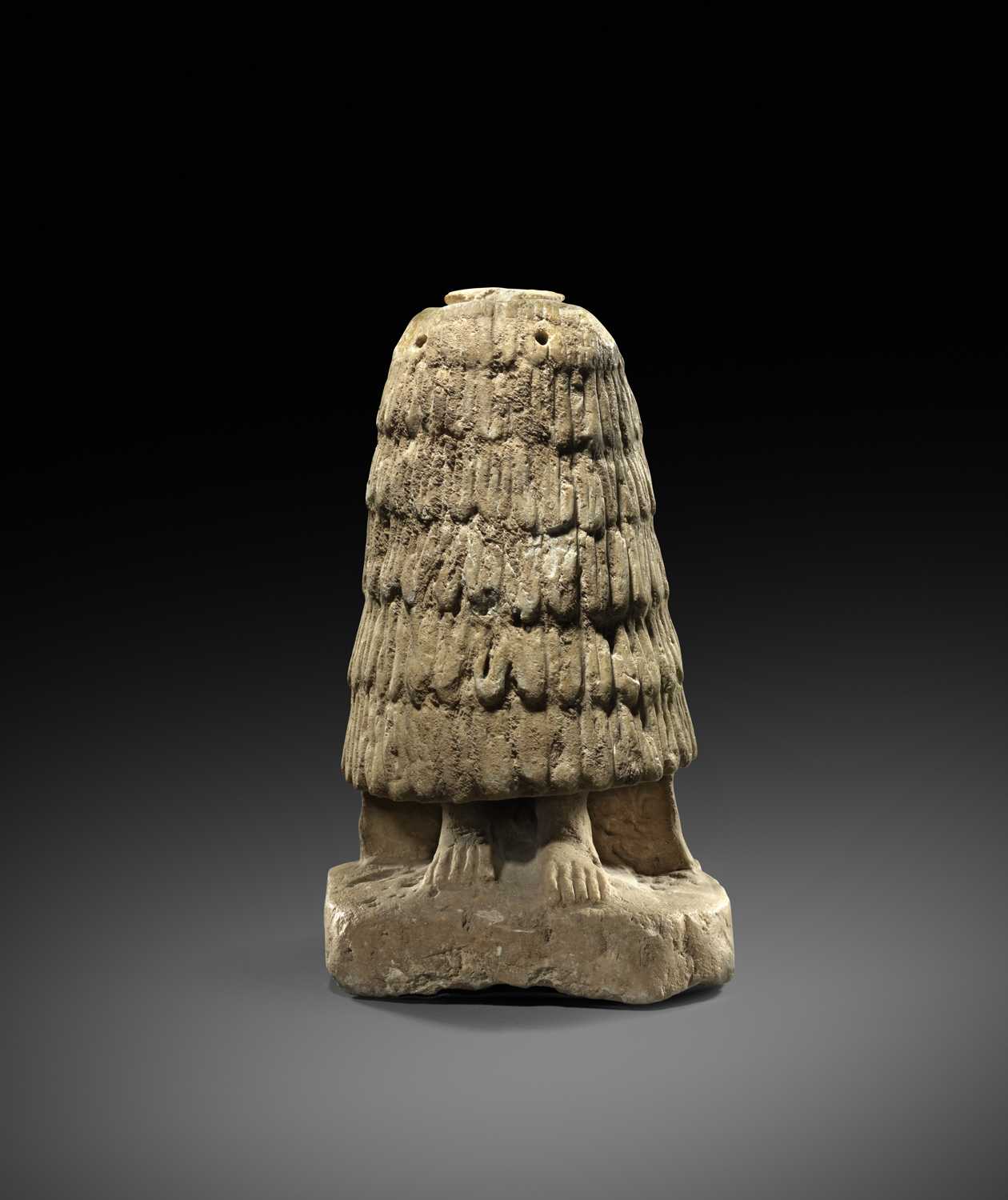Tarantine limestone column capital
The column capital is decorated with delicately, well-modelled, acanthus leaves, which extend into each corner and are topped with a scrolling volute. On one side is carved a chubby Eros or erote, his wings outstretched, in his left hand he holds a lyre, his right hand raised as if playing the strings. He stands with his left leg forward, almost as if dancing to the music he plays. The opposite side is drilled for attaching the capital onto the main body of the monument. The other two sides are decorated with a central palmette.
Note
The miniature capital would have originally been part of a naiskos. A naiskos was a diminutive three-sided funerary monument, usually with a triangular pediment supported by columns. The capital is of the Corinthian order but reinterpreted to satisfy local taste. Images of naiskos were frequently depicted on Apulian red-figure vases. There are numerous examples of similar fragments from the southern Italian site of Taranto.
The stone is a soft limestone, known as pietra di Trani (after the eponymous city of Puglia). It is similar to marble, but its light colour is tending towards a warm creamy yellow. Decorative details were added in white, yellow, pink and blue stucco.
Collection Roger Peyrefitte (1907-2000), Paris, prior to 1977
Ars Amatoria. The art of love in antiquity, 2019, 38 no. 39
J. Coleman Carter
The Sculpture of Taras, Philadelphie 1975 ; G. Volpe éd., Introduzione all’artigianato della Puglia antica, dall’età coloniale all`età romana, Università di Bari, 1992
Musée d'art et d'Histoire, Geneva, 2002-2019








